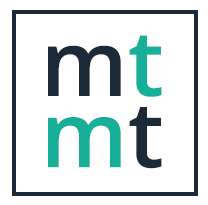Improvement in quality of dairy cattle products in areas with man-made radiation and chemical pollution
DOI:
https://doi.org/10.17205/SZIE.AWETH.2017.2.056Abstract
A study of the quality and quantity indexes of the dairy cattle milk-producing ability was conducted in areas polluted with heavy metals and radionuclides. The condition of agrobiocenoses in the Eastern Urals Radioactive Trace was studied, and correlation between the pollution of the agrobiocenoses with Cd, Cu, Zn, Fe, 90Sr, 137Cs, 210Pb, the content of the pollutants in the animal organisms and the quality of their milk was established. Trends towards the amino acid content alteration, protein and fat content reduction and the somatic cell number increase in the milk, deterioration of its microbial content, of its suitability for cheese production and grading were detected in the areas more heavily polluted with radionuclides and chemical pollutants.
An experiment with an integrated effect on the critical points of the technological process of milk and its primary product manufacture involving protection of the agrocoenosis from secondary pollution, improvement in the food quality, clearance of the pollutants from the animal organisms and metabolism care, high-technology processing of of milk and its primary products was conducted. It was established that a simultaneous effect on the critical points of the technological process siginificantly increases the effectiveness of individual methods due to synergy and leads to a significant improvement in the quality indexes of milk. In particular, in the experimental group, a 2%-to- 12% increase in the concentration of free essential amino acids and a 15-to-40-fold decrease of the somatic cell number in the milk, improvement in its suitability for cheese production and reduction in its microbial content compared with the controls were observed. In the context of permanent unavoidable man-made load on the agrobiocenoses, application of this technology permits maintaining the product quality at a high-standard level.
References
Belykh, E. S., Maystrenko, T. A., Grusdev, B. I., Vakhrusheva, O. M., Kaneva, A. V., Zainullin, V. G., Trapeznikov, A. V. (2015): Species diversity of plant communities from territories anthropogenically contaminated with natural radionuclides. Russian Journal of Ecology. 46(5) 425–430. https://doi.org/10.1134/S1067413615050057
Donnik, I. M., Shkuratova, I. A. (2017): Molecular-genetic and immunobiochemical markers in assessing the health of agricultural animals. Herald of the Russian Academy of sciences. 87(2) 139–142. https://doi.org/10.1134/S1019331617020095
Kaplan, O., Yildirim, N. C., Yildirim, N., Cimen, M. (2011): Toxic elements in animal products and environmental health. Asian J. Animal Vet. Adv. 6. 228–232. https://doi.org/10.3923/ajava.2011.228.232
Moiseeva, K. V., Krivonogova, A. S., Isaeva, A. G., Suzdaltseva, M. A. J. (2016): Assessment of xenobiotic clearance in productive animals upon its alimentary intake. Agrarian Bulletin of the Urals. 10(152) 27–30.
Vorobeichik, E. L., Pishchulin, P. G. (2016): Industrial pollution reduces the effect of trees on forming the patterns of heavy metal concentration fields in forest litter. Russian Journal of Ecology. 47(5) 431–441. https://doi.org/10.1134/S1067413616050155
Zhang, C., Yu, Z., Zeng, G., Jiang, M., Yang, Z., Cui, F., Zhu, M., Shen, L., Hu, L. (2014): Effects of sediment geochemical properties on heavy metal bioavailability. Environ Int. 73(81) 270–281. https://doi.org/10.1016/j.envint.2014.08.010
Downloads
Published
Issue
Section
License
Copyright (c) 2017 Isaeva Albina, Krivonogova Anna, Moiseeva Ksenya, Loretz Olga, Shkuratova Irina, Donnik Irina

This work is licensed under a Creative Commons Attribution-NonCommercial-NoDerivatives 4.0 International License.
The journal operates according to the principles of open access, however, the content is available under the Creative Commons 4.0 standard licenc: CC-BY-NC-ND-4.0. Under the following terms: You must give appropriate credit, provide a link to the license, and indicate if changes were made. You may do so in any reasonable manner, but not in any way that suggests the licensor endorses you or your use. You may not use the material for commercial purposes. If you remix, transform, or build upon the material, you may not distribute the modified material. You may not apply legal terms or technological measures that legally restrict others from doing anything the license permits.














